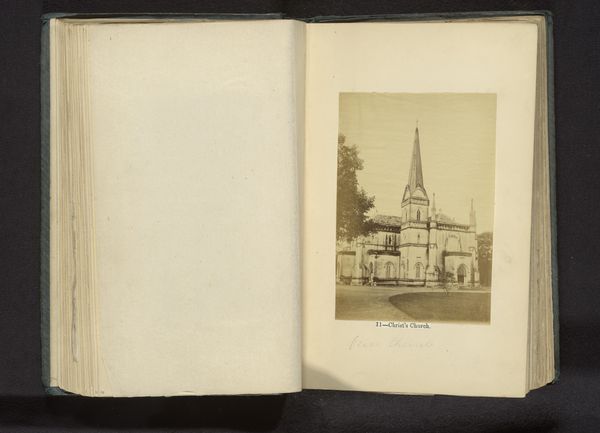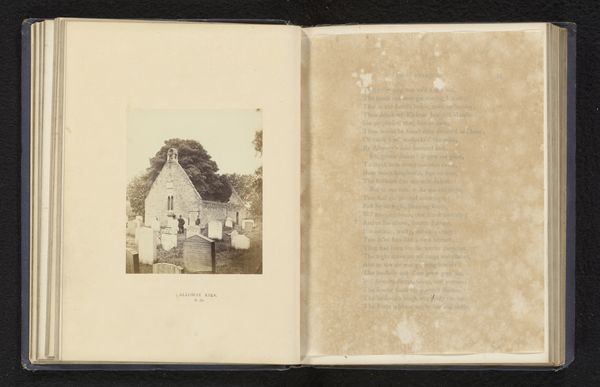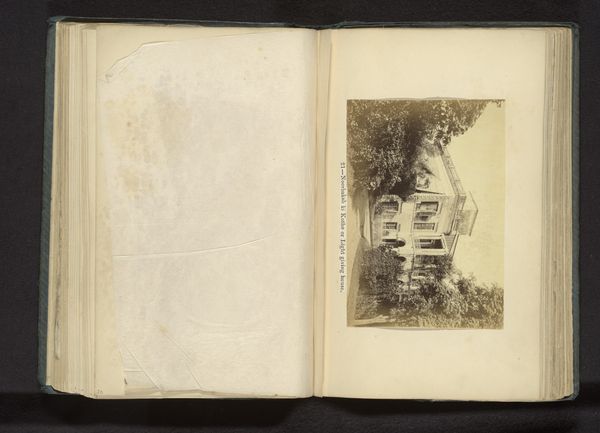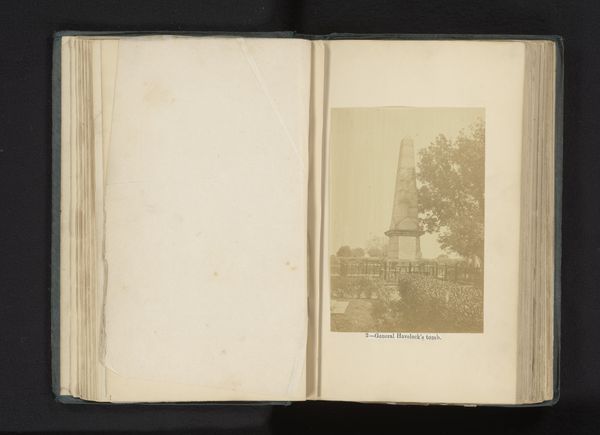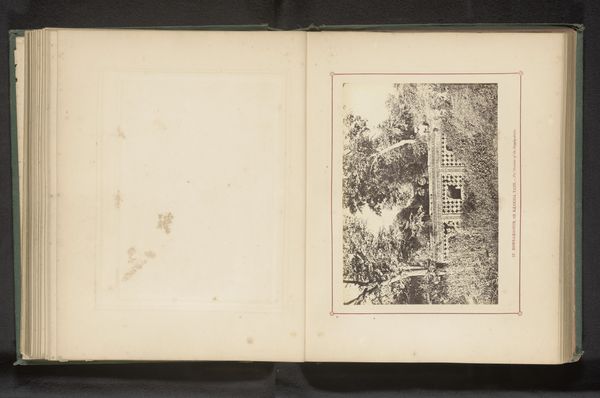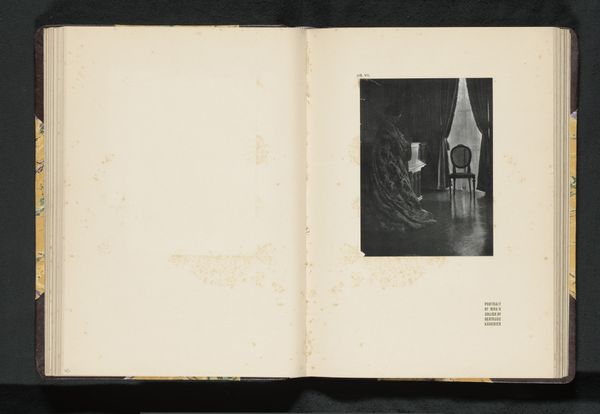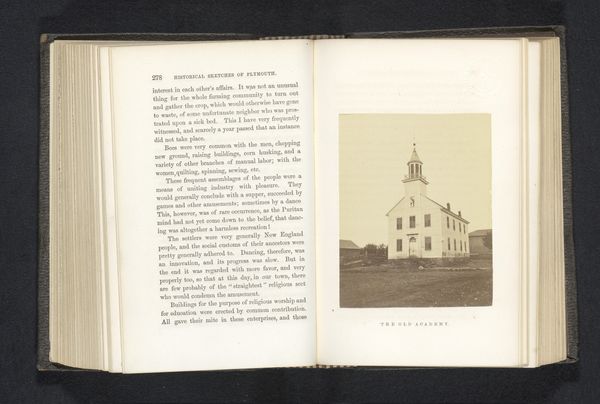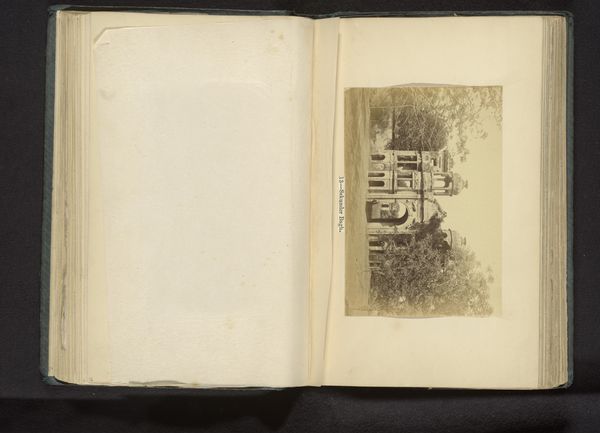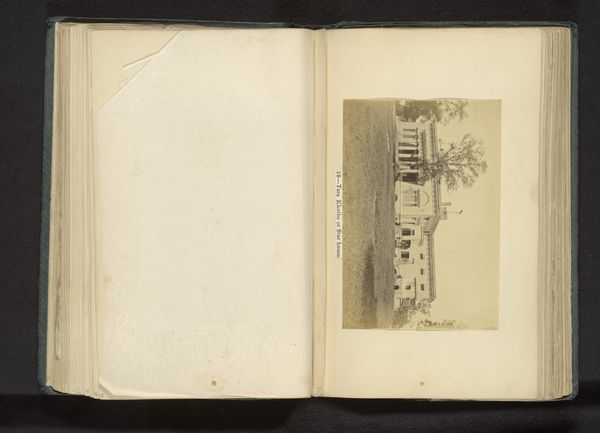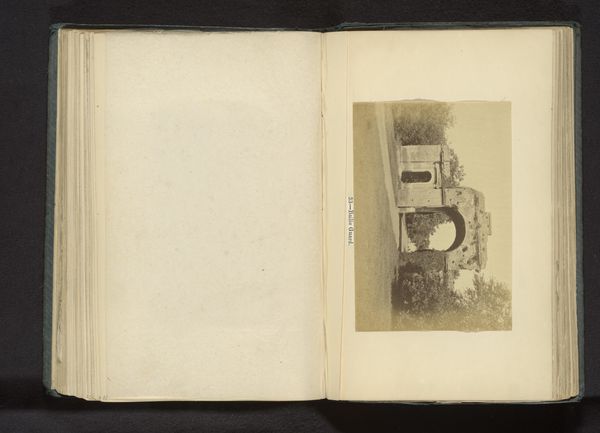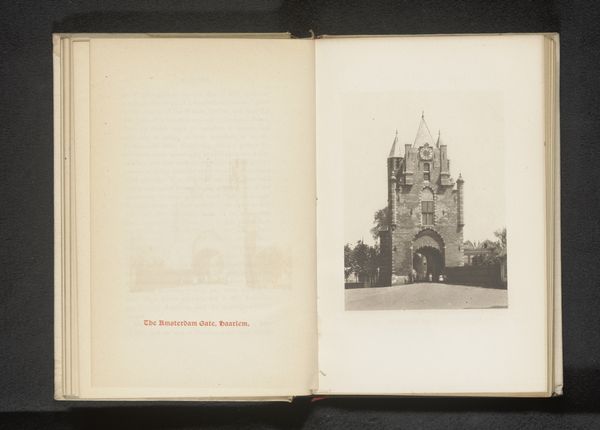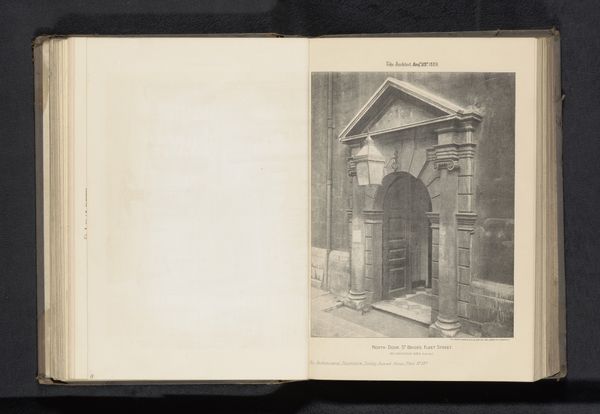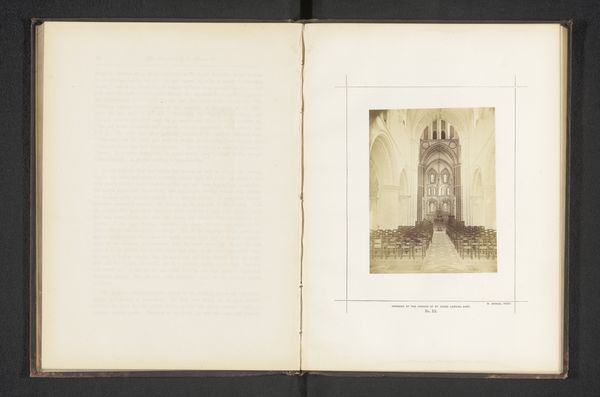
print, photography, albumen-print
# print
#
landscape
#
photography
#
orientalism
#
history-painting
#
albumen-print
Dimensions: height 150 mm, width 105 mm
Copyright: Rijks Museum: Open Domain
Curator: Here we have a photograph titled “Monument in Lucknow voor gesneuvelde Europeanen in 1857-1858,” or “Monument in Lucknow for Fallen Europeans in 1857-1858,” taken before 1874, likely by Darogha Ubbas Alli. It is an albumen print in an album, rendered in the style of Orientalism. Editor: My first thought is how the spire is almost… aggressive? It spears skyward, such a stark and somber focal point rising from what seems like pretty mundane scrubland. Like grief made geometric. Curator: That upward thrust is key. Think of obelisks, pyramids… throughout time, soaring structures have represented humanity's reaching for transcendence, an appeal to something beyond our earthly domain. But in the context of 1857 Lucknow, and the Sepoy Rebellion, the cross atop that spire holds additional, very specific meaning. Editor: The date looms heavily, doesn’t it? Such a strange collision of culture. How the photograph itself feels almost like a colonial inventory object, meticulously cataloging grief and dominance simultaneously. Do you think there's something deliberate about its presentation in this open album, a claim over history being physically displayed? Curator: Indeed. The very act of photographing the monument, then including it within an album of views from the region, asserts a kind of ownership and memorialization. The landscape genre becomes intertwined with history-painting. Even the albumen print method – a Western technology – adds to this complicated encoding of power and remembrance. Look closer. Do you see how the surrounding foliage almost seems to encroach on the stark lines of the memorial? It gives a very human feeling, like time reclaiming the space. Editor: Yes! I’m now sensing that almost hesitant persistence, nature creeping in like memory refusing to stay neatly filed away. What starts off as severe transforms. History keeps getting written, challenged and rewritten and even a monument cannot really have the final say. Curator: Precisely. The image becomes less about solid fact and more about the fluid interplay between memorialization, grief, and the unstoppable march of time and reclamation of the place. Editor: I'll not forget how that somber geometry gets subtly eroded, inviting layers of complex reflection to it. Curator: Absolutely. These layered meanings can provide continued dialogue in time.
Comments
No comments
Be the first to comment and join the conversation on the ultimate creative platform.
